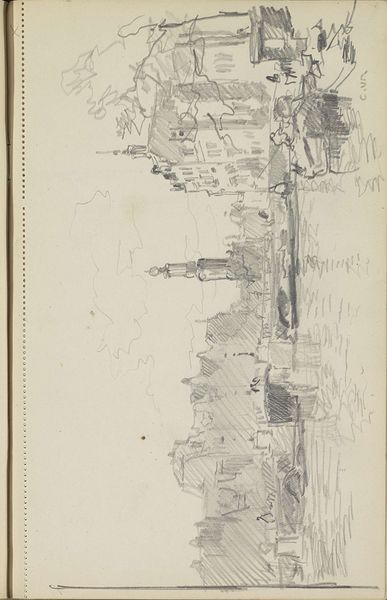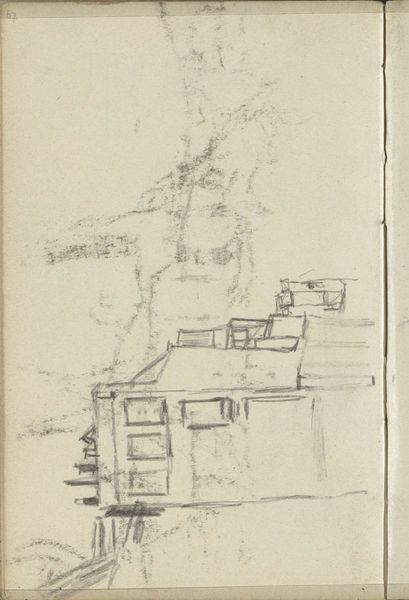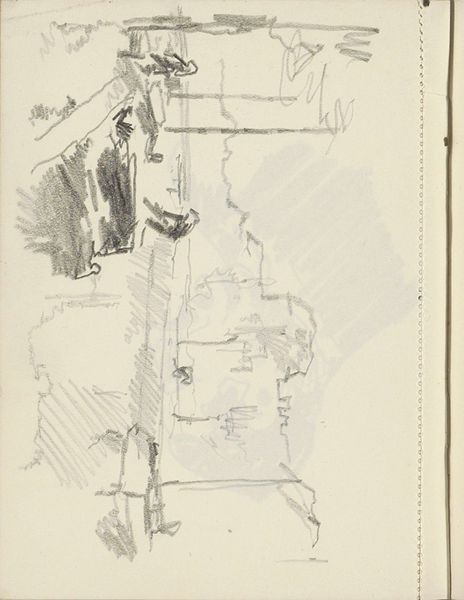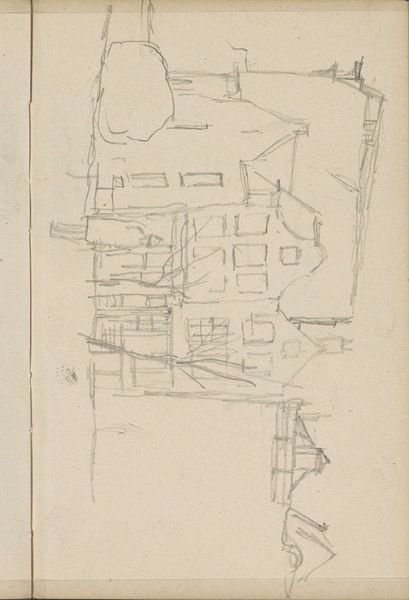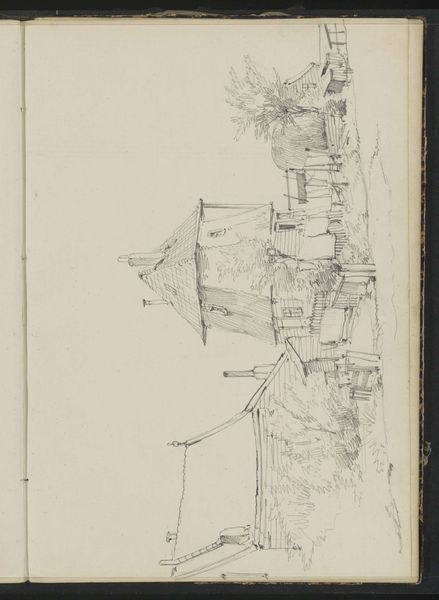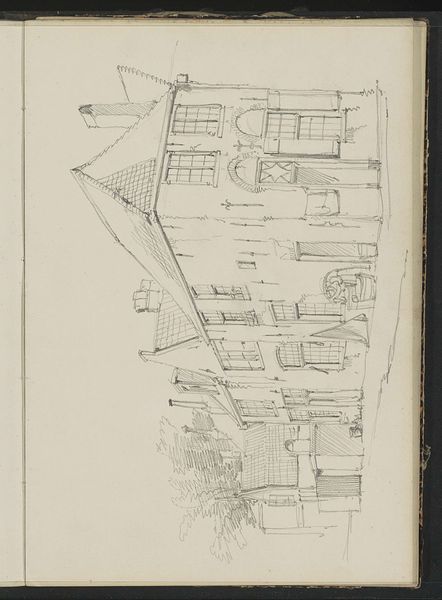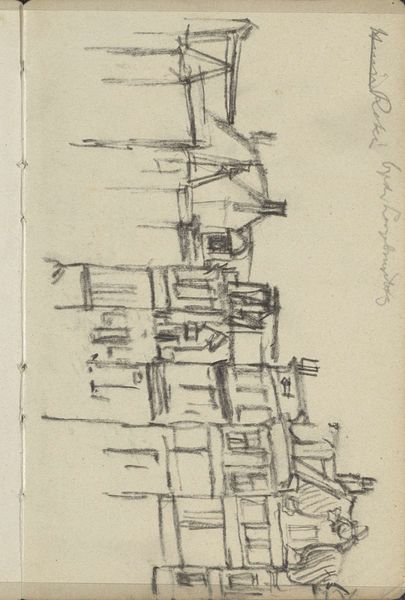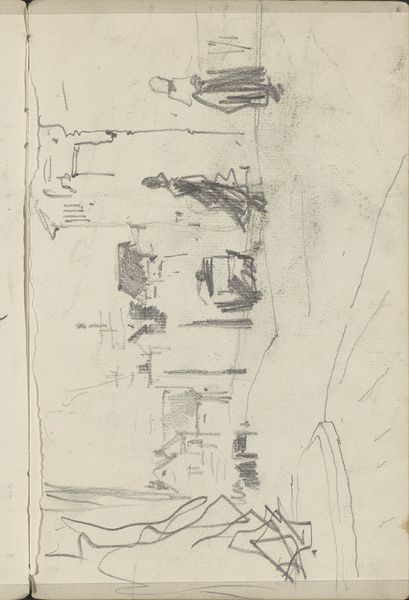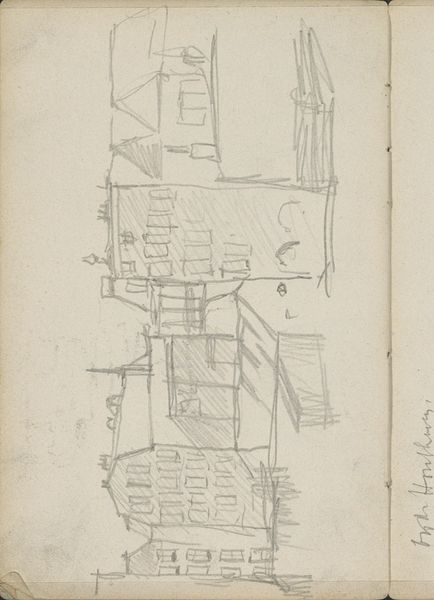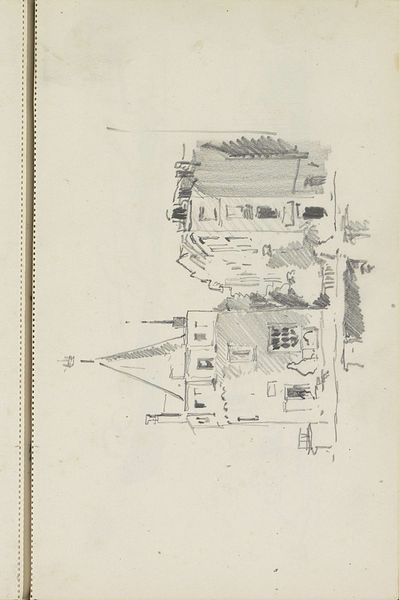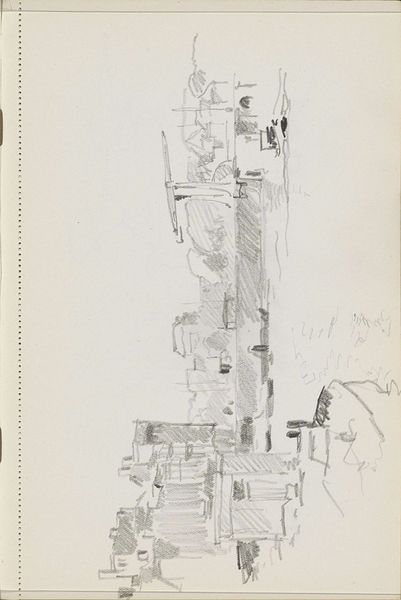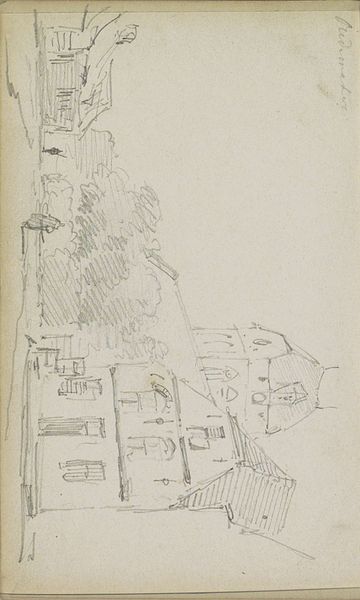
drawing, pencil
#
drawing
#
landscape
#
pencil
#
cityscape
#
street
Copyright: Rijks Museum: Open Domain
Curator: Here in Gallery 12, we have Cornelis Vreedenburgh's pencil drawing, "Huizen aan een gracht en een ophaalbrug," dating from between 1890 and 1946. Editor: It strikes me as a quick sketch, capturing a fleeting moment, maybe on his way somewhere else. There's a rawness and immediacy I find compelling, and this reminds me of urban marginalization in Amsterdam. Curator: I agree about the feeling of spontaneity. We see this as indicative of Vreedenburgh's interest in rapidly documenting urban scenes. The Rijksmuseum contextualizes the piece within a broader trend of artists capturing daily life and urban development in the Netherlands. Editor: Daily life… It’s tempting to romanticize it. But whose daily life? I'm wondering about class and access here. Canals were vital arteries, but they also divided neighborhoods and communities. Were they truly uniting for everyone or not? The fact is that Vreedenburgh and artists such as Van Gogh captured some sense of injustice. Curator: An important point. While Vreedenburgh likely aimed simply to record the changing cityscape, art never exists in a vacuum. Its display also influences viewers; the buildings appear abstracted, and the lines feel quite uncertain. I wonder if that suggests instability as communities are being reconfigured. Editor: Yes, instability but perhaps more of hope and longing. The raised drawbridge suggests a sense of transition, of entering a new phase of society or perhaps the illusion of hope within it, don't you think? These canals of Amsterdam had been an escape of social segregation for the longest time. The city offered some possibilities for a future there as immigrants and oppressed populations found solace there, so what could all of this mean, is really in between the lines of this landscape. Curator: A fascinating reading, bringing so many perspectives together. It definitely adds a richness to the work, seeing it not just as a record of the past but as a document reflecting complex issues. Editor: Absolutely. For me, seeing art like this as part of a bigger conversation about identity, urban inequality, that's where the real value lies. Art gives the opportunity to address these issues through a subjective expression.
Comments
No comments
Be the first to comment and join the conversation on the ultimate creative platform.
